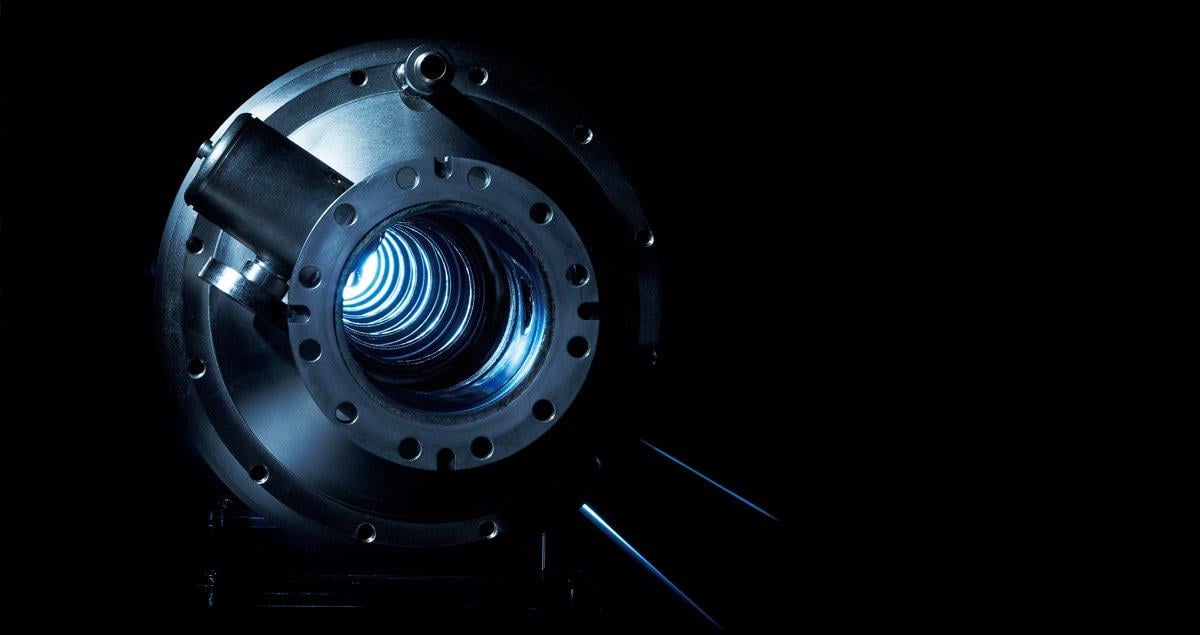Gigantic Precision Instruments

An innovative instrument that solves mysteries of the origins of the universe and all other phenomena
How does matter attain its mass? Why does the cosmos that expands across the heavens exist? Since the distant past, prominent researchers from Galileo to Newton and Einstein have sought solutions to the mysteries of science. today’s scientists are aided by the accelerator, an innovative instrument that has substantially contributed to the development of modern science and technology.
The largest of these accelerators are tens of kilometers in total length. Their role is to apply energy from radio frequency waves to charged particles such as electrons and protons and accelerate them to near the speed of light. These extremely fast-moving and high-energy particles are forced to collide with one another. Research into their states can benefit the validation of the laws of physics and more. For example, the origin of the universe is thought to be the Big Bang that occurred approximately 13.7 billion years ago. If an accelerator can be used to re-create the state of the universe immediately following the Big Bang in which there was nothing more than particles flying at high speed, it would provide a significant clue to discovering the origin of the universe.
Also, if the orbit of high-energy electrons is bent, light with extremely short wavelengths in the manner of x-rays is emitted. The use of this synchrotron radiation greatly expands possibilities for observing and understanding nano level phenomena such as the unknown mechanism by which photosynthesis occurs in the nucleus ― phenomena that heretofore could not be understood using microscopes. The fruits of research using synchrotron radiation have also recently been put to use in familiar fields. One example of this would be pharmaceuticals with new functions and efficacies that were created thanks to the analysis of three-dimensional structures of proteins.
Accelerators have provided us with a diverse array of benefits in our everyday lives.
Continuing to evolve with world-class Japanese accelerator development
The accelerator operations of MHI commenced at the beginning of the 1960s, and goback to the dawning of accelerator development in Japan. At the time, the foundation for the technology that is essential to the manufacture of accelerators was already in place as the company was using precision processing technology for nonferrous metals such as copper and aluminum that are indispensable to its manufacturing of aircraft components. Thereafter MHI took part in almost all large-scale accelerator research projects in Japan, and continued to refine such technology while gaining the confidence of researchers and research institutions.
Design and manufacturing havenow expanded to accelerating structures and accelerating cavities that accelerate particles to near the speed of light, waveguides and radio frequency windows that introduce high-power microwaves to the accelerating structure and accelerating cavities, vacuum beam chambers used as passageways for the accelerated particles, and periodical magnetic field generators, so-called undulators or wigglers that generate powerful synchrotron radiation by bending the orbit of particles in tiny increments. High-energy physics research in Japan has been outstanding, with five of the country’s 17 Nobel Prize laureates involved in research, and MHI’s accelerator technology has contributed to this research.
The KEKB Accelerator (electron-positron collider) of the High Energy Accelerator Research Organization (KEK) was used in the validation of the Kobayashi-Maskawa theory predicting CP violation, for which they were honored with the 2008 Nobel Prize for physics. Amid this effort, MHI designed and produced the injector accelerating structure, vacuum beam chamber, normal conducting ARES cavity, and superconducting crab cavity, thereby contributing to the Japanese scientists being so honored.
MHI’s accelerators have continuously supported the successes of researchers from behind the scenes for over 50 years and MHI continues to support passionately the dreams of researchers in their quest for scientific technology that will benefit mankind and society.





